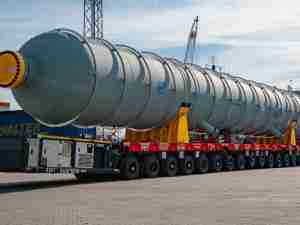India aims to invest 100 trillion rupees ($1.35 trillion) in infrastructure to boost economic growth and create jobs, Prime Minister Narendra Modi said Sunday, laying out national priorities on the country’s 75th Independence Day.
The investments will be made in India’s logistics sector to help integrate the country’s varied modes of transport, Modi said in a national address from the historic Red Fort in capital New Delhi. “This will cut travel time and increase industry productivity. It will help make Indian industry globally competitive and develop future economic zones.”
Modi didn’t give details. Last year also Modi had flagged his government’s focus on infrastructure worth 110 trillion rupees, while in 2019 the government had a goal of building 100 trillion rupees of public work projects. Asia’s third-largest economy needs to build roads and ports as it competes for investments looking to move out of China.
“The investments could be part of a broader infrastructure but this time with a sharper focus on logistics, which are the biggest constraint for ramping up infrastructure in India,” said Abheek Barua, chief economist at HDFC Bank Ltd. “The Prime Minister is trying to improve domestic supply chain and plug into the international supply chain that will help in improving our share of exports in global economy.”
Modi last week called for a target of $400 billion in exports this financial year after last year’s numbers fell 7.2% to $290.6 billion. The government has also pushed for a rationalization of labor laws, sought to reform agriculture and to amend tax laws amid rising risks to growth, including inflation.
Going Green
Modi aims to wind down India’s energy imports in the next 25 years as part of the nation’s carbon efficiency goals.
“For India to be self-reliant it is imperative that it becomes energy independent. India will become energy independent by its 100th independence day.”
The road map to energy self-reliance includes making India a global hub for green hydrogen and aiming for its railways to be a net-zero carbon emitter by 2030, Modi said.
India, the world’s third-largest energy consumer and oil importer, buys 85% of its oil needs and pays 12 trillion rupees a year toward energy imports, Modi said, adding that the government is focusing on expanding gas-based fuel and electricity-driven mobility.
With global investors increasingly restricting support to companies contributing to carbon footprints, Modi’s government is encouraging Indian businesses to completely shift to renewable energy from a fossil-fuel dominated operation. The country plans to expand its renewable-power capacity almost five-fold by 2030 to meet its de-carbonization targets.








